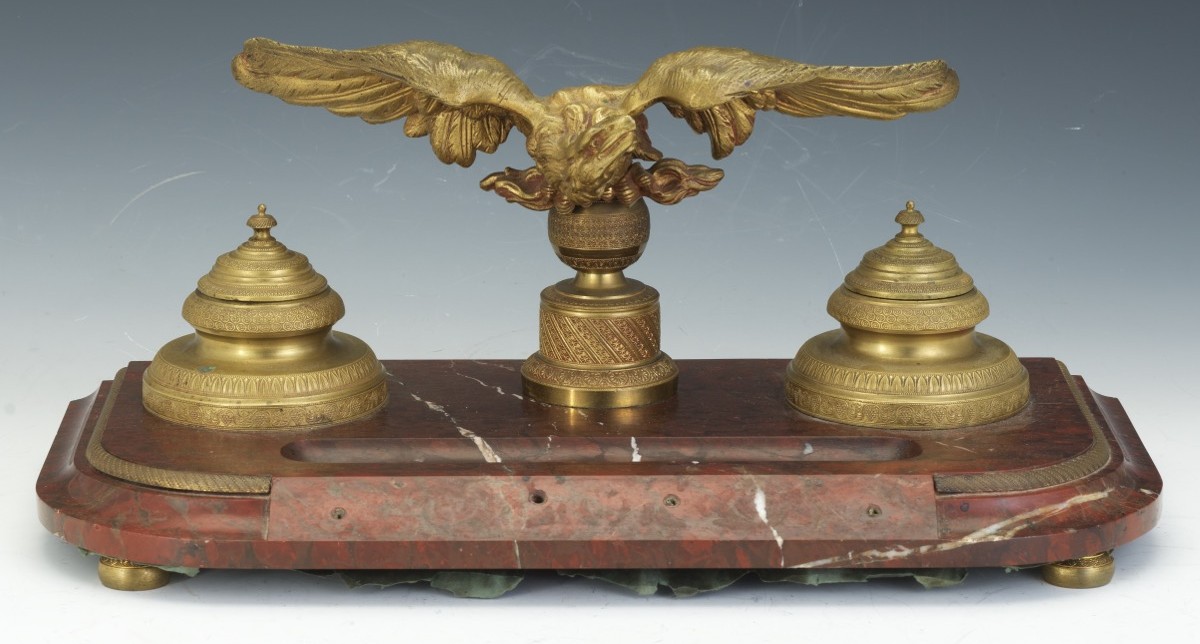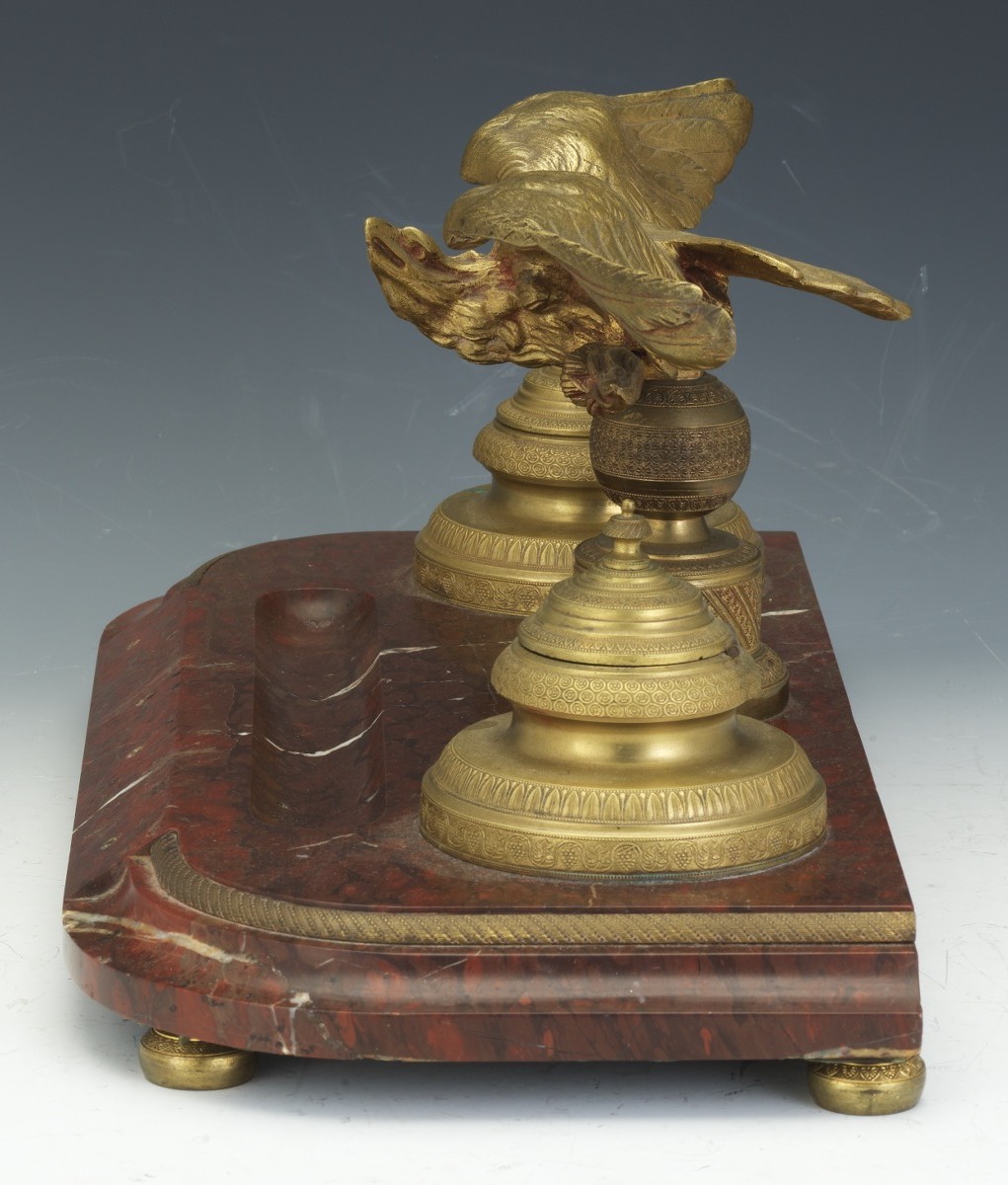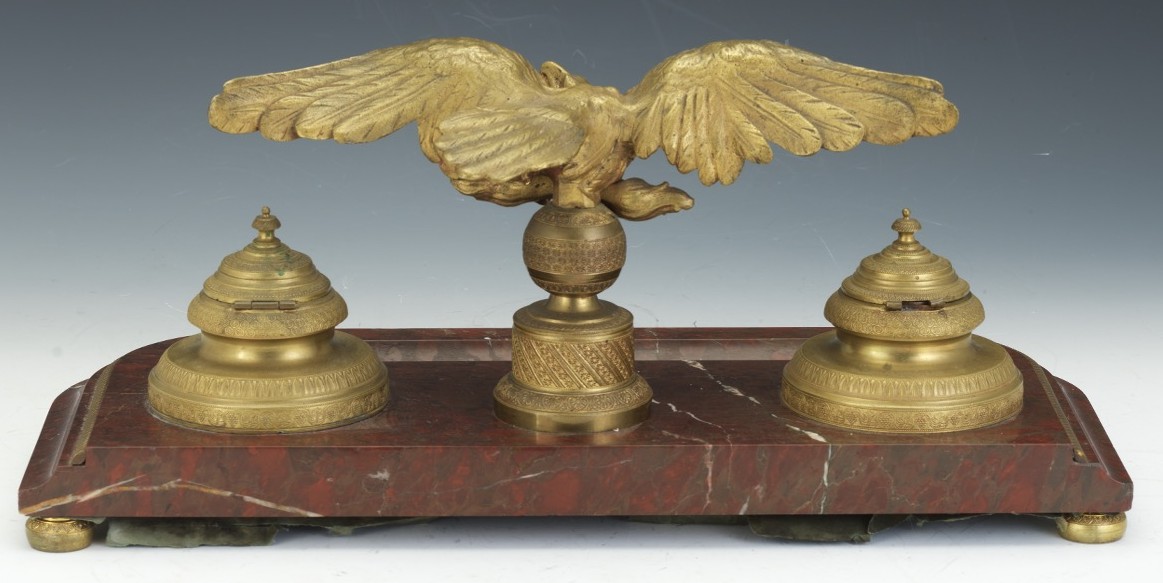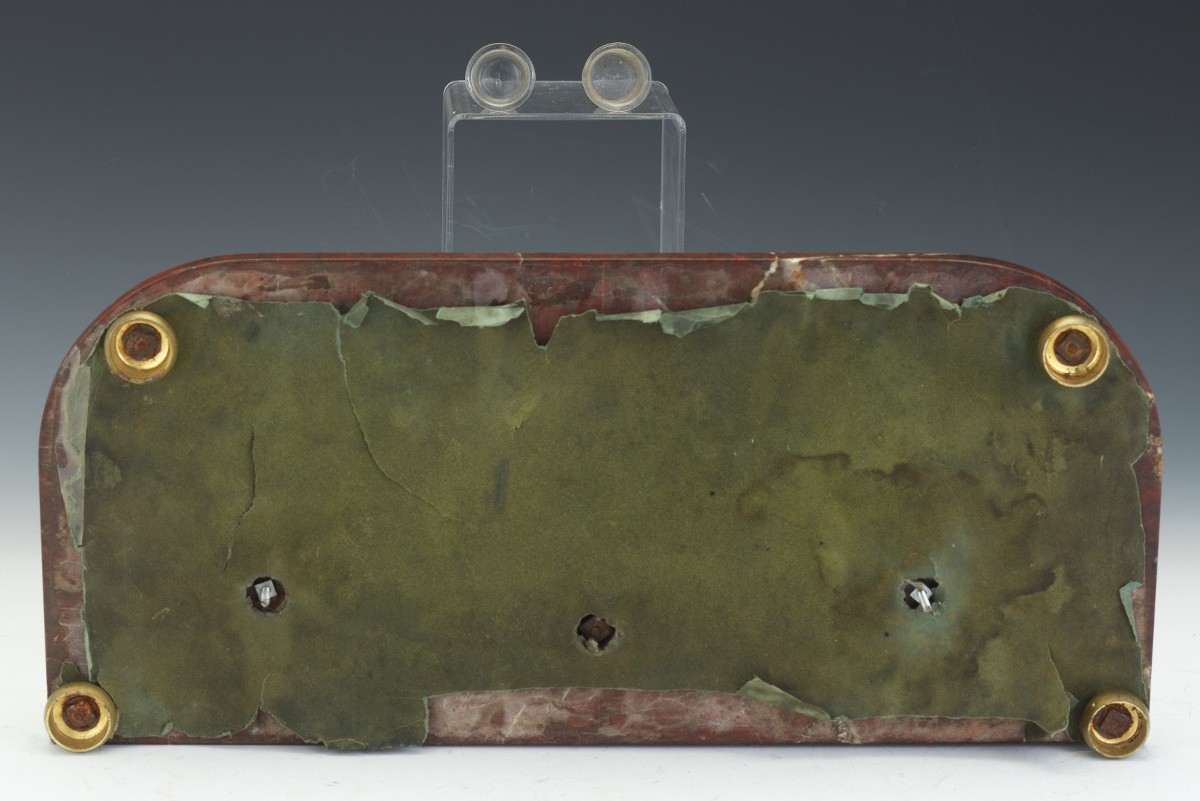
French Empire Style Bronze and Rouge Marble Double Inkstand
| Categories | Figural - Animals & Living Creatures, Stone/Marble/Ivory/Bone/Hoof/Leather |
| Type | Eagle |
| Material | Marble, Ormolu |
| Markings | Unmarked |
| Manufacturer | Undetermined |
| Origin | France |
| Date or Era | circa 1870 |
| Measuring | 18" x 8 ¼" x 8 ⅜" high |
This inkstand is an example of the French Empire style, known for its opulence and classical inspiration. It combines a rouge marble base with ormolu bronze accents. The marble, with its rich reddish hue and fine veining, is shaped into a substantial base that rests on four ornate bun feet. It features a central, carved slot in the front, designed to hold pens.
Flanking the central element are two ormolu bronze inkwells with hand-blown glass inserts. Each inkwell is topped with a hinged, stepped dome lid, which is a classic design element of the Empire period.
At the center of the inkstand is an ormolu bronze baluster pedestal, which rises to support the main figural element: a majestic eagle with its wings spread wide. The eagle, a powerful symbol of Empire and authority, holds a bundle of stylized flames or lightning bolts in its talons. The eagle’s pose and its position atop the pedestal give the piece a commanding presence.
The inkstand is missing its decorative panel on the front, which would have completed the central design, likely with a classical scene or a coat of arms.
Style and Materials
- French Empire Style: This style, popular during the reign of Napoleon I (1804–1814), drew heavily on Roman and Greek art, favoring bold, clean lines and imposing, symmetrical forms. The use of eagles and classical motifs like the baluster and bun feet is characteristic of this period. While the true Empire period under Napoleon I was from roughly 1804-1814, the style was so iconic that it saw a major revival later in the century, particularly under Napoleon III (1852-1870).
- Ormolu (D’ore Bronze): Ormolu, or bronze d’ore in French, is a technique of gilding bronze with a high-karat gold-mercury amalgam. The result is a stunningly rich, brilliant gold finish that does not tarnish. This labor-intensive and now-rare process was a hallmark of high-end French decorative arts.
- Rouge Marble: The use of a fine rouge (red) or other colored marble was common in Empire-era furnishings to provide a striking contrast with the gilded bronze.
Sold for $320 in May 2025
Content disclaimer. The information posted is the owner’s best knowledge and may not have been vetted by the SOIC. We welcome comments, corrections, and additions, working to make our website information comprehensive and accurate.
Join the Society of Inkwell Collectors (SOIC) – it’s free!
Founded in 1981 as a non-profit organization,
we are documenting inkwells (and accessories).
We’re here to help and inform!





